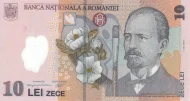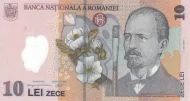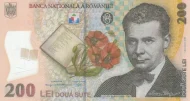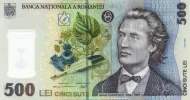Exchange your Romanian Lei
Do you have leftover Romanian Lei? We offer a fast and easy way to exchange both current and withdrawn Romanian Lei banknotes and coins. Convert them into your local currency today with our quick and hassle-free exchange service.
lei - RON
The Romanian Leu has been in use since 2005 and continues to support Romania’s economy, particularly in trade and manufacturing.
Romanian Lei Information
The Romanian Leu (RON) is the official currency of Romania. It was introduced in 2005, replacing the old Romanian Leu (ROL) at a rate of 10,000 old lei to 1 new leu, as part of a major currency reform aimed at stabilising Romania’s economy. The name “leu” means “lion” in Romanian, reflecting the historical use of lions on Dutch thalers, which were widely circulated in the region during the 17th century.
The Romanian Leu is subdivided into 100 bani, and the currency is issued in both coins and banknotes. Coins are available in denominations ranging from 1 ban to 50 bani, while banknotes are issued in denominations of 1, 5, 10, 50, 100, 200, and 500 lei. The designs on Romanian Leu banknotes feature important national figures, cultural landmarks, and historical symbols, including images of Romania’s national poet Mihai Eminescu and the Romanian Athenaeum in Bucharest.
Romania’s economy is one of the largest in Southeastern Europe, with key sectors including agriculture, manufacturing, and services. The stability of the Romanian Leu is crucial for supporting Romania’s trade relationships within the European Union and globally. The Leu plays a vital role in facilitating trade, particularly in industries such as automotive production, electronics, and agriculture.
The National Bank of Romania (Banca Naţională a României) is responsible for issuing the Romanian Leu and managing the country’s monetary policy. The central bank’s main objectives are to maintain price stability, control inflation, and support economic growth. The Leu is a freely floating currency, and its value is determined by market forces,
making it one of the more stable currencies in the region.
One of the unique aspects of the Romanian Leu is its historical connection to the old leu, which was subject to high inflation during the 1990s. The introduction of the new leu in 2005 marked a significant step in Romania’s economic modernisation, helping the country achieve greater financial stability and preparing it for eventual integration
into the Eurozone.
In conclusion, the Romanian Leu has been the official currency of Romania since 2005 and continues to play a central role in supporting the country’s economic growth and trade. It remains a symbol of Romania’s economic stability and its aspirations for integration into the European Union.







